African Americans in Indiana
- Purchases may be made via a visit to our office, by telephone (317-232-2535), fax (317-232-3728), or e-mail (ihb @ history.in.gov). More info on purchasing here.
Curveball: The Remarkable Story of Toni Stone the First Woman to Play Professional Baseball in the Negro League
Martha Ackmann

From the time she was a girl growing up in the shadow of Lexington Park in Saint Paul, Minnesota, Toni Stone knew she wanted to play professional baseball. There was only one problem--every card was stacked against her. Curveball tells the inspiring story of baseball’s "female Jackie Robinson," a woman whose ambition, courage, and raw talent propelled her from ragtag teams barnstorming across the Dakotas to playing in front of large crowds at Yankee Stadium.
cloth / 274 pp. / 2010 / ISBN 978-1-55652-796-8 / $24.95
Order No. 964
Major: A Black Athlete, a White Era, and the Fight to be the World's Fastest Human Being
Todd Balf
 Major is the gripping story of a superstar nobody saw coming--a classic underdog, aided by an unlikely crew: a disgraced fight promoter, a broken ex-racer, and a poor upstate girl from New York who wanted to be a queen. It is also the account of a fierce rivalry that would become an archetypal tale of white versus black in the 20th century. Most of all, it is the tale of our nation's first black sports celebrity-- a man who transcended the handicaps of race at the turn of the century to reach the stratosphere of fame.
Major is the gripping story of a superstar nobody saw coming--a classic underdog, aided by an unlikely crew: a disgraced fight promoter, a broken ex-racer, and a poor upstate girl from New York who wanted to be a queen. It is also the account of a fierce rivalry that would become an archetypal tale of white versus black in the 20th century. Most of all, it is the tale of our nation's first black sports celebrity-- a man who transcended the handicaps of race at the turn of the century to reach the stratosphere of fame.
cloth / 306 pp. / 2008 / ISBN 978-0-307-23658-6 / $24.00
Order No. 2684 - out of stock
paper / 320 pp. / 2009 / ISBN 978-0307236593 / $14.00
Order No. 788
A Slave No More
David W. Blight
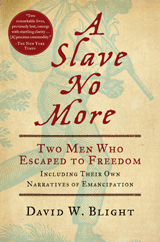
Slave narratives are extremely rare; very few are first-person accounts by slaves who freed themselves. Now two newly uncovered narratives, and the biographies of the men who wrote them, join that exclusive group. Wallace Turnage was a teenage field hand on an Alabama plantation, John Washington an urban slave in Virginia. They never met. But both saw opportunity in the chaos of the Civil War, both escaped north, and both left remarkable accounts of their flights to freedom. This book is more than their narratives: working from painstakingly acquired records and sources for the lives of heretofore unknown former slaves, the historian David W. Blight has discovered and reconstructed their lives--from slave childhood to black working-class stability in the North.
paper / 315 pp. / 2007 / ISBN 978-0-15-603451-7 / $14.95
Order No. 984
A Little More Freedom: African Americans Enter the Urban Midwest, 1860-1930
Jack S. Blocker
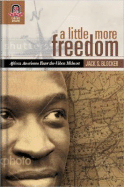 Why did African Americans move from the rural South to the metropolitan North? Scholars have shown that African Americans took part in the urbanization of American society between the Civil War and the Great Depression, but the racial dimensions of their migration have remained unclear. A Little More Freedom is the first study to trace African American locational choices during the crucial period when migrants created pathways that would shape mobility through the twentieth century and beyond.
Why did African Americans move from the rural South to the metropolitan North? Scholars have shown that African Americans took part in the urbanization of American society between the Civil War and the Great Depression, but the racial dimensions of their migration have remained unclear. A Little More Freedom is the first study to trace African American locational choices during the crucial period when migrants created pathways that would shape mobility through the twentieth century and beyond.
cloth / 352 pp. / 2008 / ISBN 9780814210673 / $24.95
Order No. 2870
Indiana Avenue: Black Entertainment Boulevard
Rev. C. Nickerson Bolden
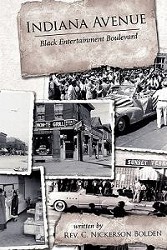
Indiana Avenue: Black Entertainment Boulevard is the story of how a community functioned, prospered, declined, and revitalized. It is a story with great implications. On the one hand, this story is a localized history of a subculture. On the other hand, to understand the Indiana Avenue story is to understand how similar historical communities like Harlem in New York, Bourbon Street in New Orleans, and Beale Street in Memphis functioned and developed. All these communities, like many more, had similar traits and parallel histories. These communities became known nationally as stops on a Chitterlings Circuit, a network of entertainment venues made famous due to Jim Crow and separatist laws.
paper / 99 pp. / 2009 / ISBN 978-1-4389-2826-5 / $14.99
Order No. 969
Bound for Canaan: The Underground Railroad and the War for the Soul of America
Fergus M. Bordewich
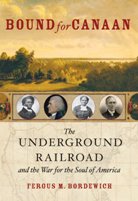
Bound for Canaan tells the stories of men and women like David Ruggles, who invented the black underground in New York City; bold Quakers like Isaac Hopper and Levi Coffin, who risked their lives to build the Underground Railroad; and the inimitable Harriet Tubman. Interweaving thrilling personal stories with the politics of slavery and abolition, Bound for Canaan shows how the Underground Railroad gave birth to this country’s first racially integrated, religiously inspired movement for social change.
cloth / 560 pp. / 2005 / ISBN 0-06-052430-8 / $27.95
Order No. 2532
Madame Walker Theatre Center: An Indianapolis Treasure
A'Lelia Bundles
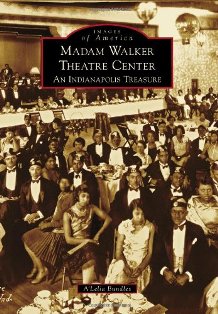 As they watched construction of the block-long flatiron building brick by brick throughout 1927, African American residents of Indianapolis could scarcely contain their pride. This new headquarters of the Madam C.J. Walker Manufacturing Company, with its terra-cotta trimmed facade, was to be more than corporate offices and a factory for what then was one of Americas most successful black businesses. In fact, it was designed as a city within a city, with an African Art Deco theater, ballroom, restaurant, drugstore, beauty salon, beauty school, and medical offices. Generations of African American families met for Sunday dinner at the Coffee Pot, enjoyed first-run movies and live performances in the Walker Theatre, and hosted dances in the Casino. Today, this National Historic Landmark is an arts center anchoring the Indiana Avenue Cultural District.
As they watched construction of the block-long flatiron building brick by brick throughout 1927, African American residents of Indianapolis could scarcely contain their pride. This new headquarters of the Madam C.J. Walker Manufacturing Company, with its terra-cotta trimmed facade, was to be more than corporate offices and a factory for what then was one of Americas most successful black businesses. In fact, it was designed as a city within a city, with an African Art Deco theater, ballroom, restaurant, drugstore, beauty salon, beauty school, and medical offices. Generations of African American families met for Sunday dinner at the Coffee Pot, enjoyed first-run movies and live performances in the Walker Theatre, and hosted dances in the Casino. Today, this National Historic Landmark is an arts center anchoring the Indiana Avenue Cultural District.
paper / 128 pp. / 2013 / ISBN 978-1467110877 / $21.99
Order No. 1305
On Her Own Ground: The Life and Times of Madam C.J. Walker
A'Lelia Bundles
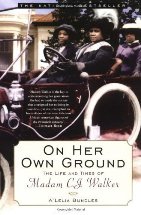 On Her Own Ground is the first full-scale, definitive biography of Madam C. J. Walker—the legendary African American entrepreneur and philanthropist—by her great-great-granddaughter, A'Lelia Bundles. On Her Own Ground is not only the first comprehensive biography of one of recent history's most amazing entrepreneurs and philanthropists, it is about a woman who is truly an African American icon. Drawn from more than two decades of exhaustive research, the book is enriched by the author's exclusive access to personal letters, records and never-before-seen photographs from the family collection. Bundles also showcases Walker's complex relationship with her daughter, A'Lelia Walker, a celebrated hostess of the Harlem Renaissance and renowned friend to both Langston Hughes and Zora Neale Hurston. In chapters such as “Freedom Baby,” “Motherless Child,” “Bold Moves” and “Black Metropolis,” Bundles traces her ancestor's improbable rise to the top of an international hair care empire that would be run by four generations of Walker women until its sale in 1985. Along the way, On Her Own Ground reveals surprising insights, tells fascinating stories and dispels many misconceptions.
On Her Own Ground is the first full-scale, definitive biography of Madam C. J. Walker—the legendary African American entrepreneur and philanthropist—by her great-great-granddaughter, A'Lelia Bundles. On Her Own Ground is not only the first comprehensive biography of one of recent history's most amazing entrepreneurs and philanthropists, it is about a woman who is truly an African American icon. Drawn from more than two decades of exhaustive research, the book is enriched by the author's exclusive access to personal letters, records and never-before-seen photographs from the family collection. Bundles also showcases Walker's complex relationship with her daughter, A'Lelia Walker, a celebrated hostess of the Harlem Renaissance and renowned friend to both Langston Hughes and Zora Neale Hurston. In chapters such as “Freedom Baby,” “Motherless Child,” “Bold Moves” and “Black Metropolis,” Bundles traces her ancestor's improbable rise to the top of an international hair care empire that would be run by four generations of Walker women until its sale in 1985. Along the way, On Her Own Ground reveals surprising insights, tells fascinating stories and dispels many misconceptions.
paper / 416 pp. / 2001 / 9780743431729 / $17.99
Order no. 1584
Slavery and the Founders: Race and Liberty in the Age of Jefferson
Paul Finkelman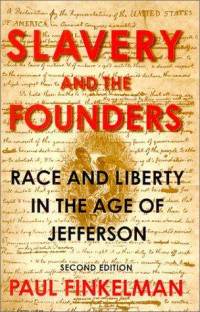 In this significant revision of his acclaimed work, Paul Finkelman places the problem of slavery in the context of early American politics and the making of the Constitution. He argues that slavery was a bone of contention from the first days of the Constitutional Convention to the last, and demonstrates persuasively that the debate on slavery in national politics and the problem of fugitive slaves predated the antebellum period. Finkelman looks unblinkingly at the ways that the founders failed to resolve the fundamental contradiction between the notion that "All men are created equal" and their own personal and political involvement in slavery. In particular, Finkelman examines the case of Thomas Jefferson: how his personal beliefs made it impossible for him to come to terms with slavery. In a new chapter, Finkelman argues that the Federalists, long regarded as aristocrats, were actually a strong force for emancipation. Clear, concise, and at times controversial, Slavery and the Founders is a valuable contribution to the study of early America and the ways in which race has been at the very heart of a national dilemma from the beginning.
In this significant revision of his acclaimed work, Paul Finkelman places the problem of slavery in the context of early American politics and the making of the Constitution. He argues that slavery was a bone of contention from the first days of the Constitutional Convention to the last, and demonstrates persuasively that the debate on slavery in national politics and the problem of fugitive slaves predated the antebellum period. Finkelman looks unblinkingly at the ways that the founders failed to resolve the fundamental contradiction between the notion that "All men are created equal" and their own personal and political involvement in slavery. In particular, Finkelman examines the case of Thomas Jefferson: how his personal beliefs made it impossible for him to come to terms with slavery. In a new chapter, Finkelman argues that the Federalists, long regarded as aristocrats, were actually a strong force for emancipation. Clear, concise, and at times controversial, Slavery and the Founders is a valuable contribution to the study of early America and the ways in which race has been at the very heart of a national dilemma from the beginning.
paper / 308 pp. / 2001 / ISBN 9780765604392 / $29.95
Order No. 2833
Slavery and the Law
Paul Finkelman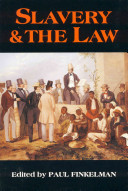 In this book, prominent historians of slavery and legal scholars analyze the intricate relationship between slavery, race, and the law from the earliest Black Codes in colonial America to the passage of the Fugitive Slave Law and the Dred Scott decision prior to the Civil War. Slavery & the Law's wide-ranging essays focus on comparative slave law, auctioneering practices, rules of evidence, and property rights, as well as issues of criminality, punishment, and constitutional law.
In this book, prominent historians of slavery and legal scholars analyze the intricate relationship between slavery, race, and the law from the earliest Black Codes in colonial America to the passage of the Fugitive Slave Law and the Dred Scott decision prior to the Civil War. Slavery & the Law's wide-ranging essays focus on comparative slave law, auctioneering practices, rules of evidence, and property rights, as well as issues of criminality, punishment, and constitutional law.
paper / 475 pp. / 1997, 2002 / ISBN 9780742521193 $37.95$19.50 / Order No. 2829
Gateway to Freedom
Eric Foner
 More than any other scholar, Eric Foner has influenced our understanding of America's history. Now, making use of extraordinary evidence, the Pulitzer Prize winning historian once again reconfigures the national saga of American slavery and freedom.
More than any other scholar, Eric Foner has influenced our understanding of America's history. Now, making use of extraordinary evidence, the Pulitzer Prize winning historian once again reconfigures the national saga of American slavery and freedom.
2015 / 320 pp / 9780198737902 / $26.95
Order No. 1495
Written by Herself: Literary Production by African American Women, 1746-1892
Frances Smith Foster
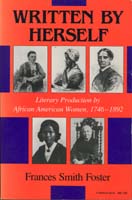
Insightful literary analysis and historical investigation of a wide range of literature by African-American women prior to the 20th-century.
paper / 206 pp. 1993 / ISBN 0-253-20786-X / $13.95
Order No. 2132
For Gold and Glory: Charlie Wiggins and the African-American Racing Car Circuit
Todd Gould
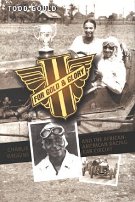
The never-before-told story of "the Negro Speed King" and the African-American racing car circuit.
cloth / 212 pp. / 2002 / ISBN 0-253-34133-7 / $27.95
Order No. 2382
paper / $19.95
Order No. 2660
Fleeing for Freedom: Stories of the Underground Railroad As Told by Levi Coffin and William Still
Willene and George Hendrick, eds.
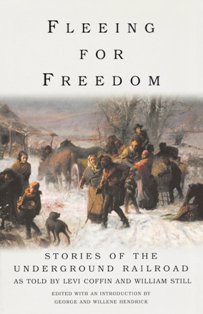 Fleeing for Freedom includes selected narratives from the two most important contemporary chroniclers of the Underground Railroad, Levi Coffin and William Still. Here are firsthand descriptions of the experiences of escaped slaves making their way to freedom in the North and in Canada in the years before the Civil War. George and Willene Hendrick have chosen a broad range of stories to reflect the strategies, tactics, heartbreak, and dangers―for both the slaves and the "conductors"―of the secret network. In their Introduction, they provide basic information about the scope and workings of the Underground Railroad and its impact on slaves, slaveholders, and the Northern abolitionist societies that were so heavily involved.
Fleeing for Freedom includes selected narratives from the two most important contemporary chroniclers of the Underground Railroad, Levi Coffin and William Still. Here are firsthand descriptions of the experiences of escaped slaves making their way to freedom in the North and in Canada in the years before the Civil War. George and Willene Hendrick have chosen a broad range of stories to reflect the strategies, tactics, heartbreak, and dangers―for both the slaves and the "conductors"―of the secret network. In their Introduction, they provide basic information about the scope and workings of the Underground Railroad and its impact on slaves, slaveholders, and the Northern abolitionist societies that were so heavily involved.
paper / 224 pp. / 2003 / ISBN 978-1566635462 / $14.95
Order No. 1328
Black Women in America
2 vol. set
Darlene Clark Hine, et al., ed.

A gold mine of information on the leadership, courage, perseverance, and creativity of African-American women with over 450 images.
paper / 808 pp. / 1994 / ISBN 0-253-32774-1 / $49.95
Order No. 2036
The Black Women in the Middle West Project: A Comprehensive Resource Guide, Illinois and Indiana
Darlene Clark Hine

This final report contains historical essays, oral histories, biographical sketches, and descriptions of document collections gathered by this project, which was headquartered at Purdue University.
paper / 238 pp. / 1986 / ISBN 1-885323-47-6 / $6.75
Order No. 4005
Africanisms in American Culture
Joseph E. Holloway, ed.
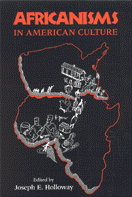
New interpretations of the impact of African origins on North American history and culture presented in ten scholarly essays.
cloth / 249 pp. / 1991 / ISBN 0-253-32839-X / $39.95
Order No. 2163
paper / 249 pp. / 1990 / ISBN 0-253-20686-3 / $14.95
Order No. 2326
Henry's Freedom Box: A True Story from the Underground Railroad
Ellen Levine and Kadie Nelson
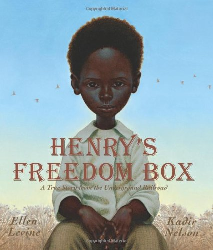
A stirring, dramatic story of a slave who mails himself to freedom by a Jane Addams Peace Award-winning author and a Coretta Scott King Award-winning artist. Henry Brown doesn't know how old he is. Nobody keeps records of slaves' birthdays. All the time he dreams about freedom, but that dream seems farther away than ever when he is torn from his family and put to work in a warehouse. Henry grows up and marries, but he is again devastated when his family is sold at the slave market. Then one day, as he lifts a crate at the warehouse, he knows exactly what he must do: He will mail himself to the North. After an arduous journey in the crate, Henry finally has a birthday -- his first day of freedom. Henry's story is similar to that of Alexander McClure.
cloth / 40 pp. / 2007 / 9780439777339 / $19.00
Order no. 1621
Stolen Childhood: Slave Youth in Nineteeth-Century America (2nd Edition)
Wilma King
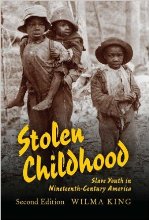 Stolen Childhood focuses on the millions of children and youth enslaved in 19th-century America. This enlarged and revised edition reflects the abundance of new scholarship on slavery that has emerged in the 15 years since the first edition. While the structure of the book remains the same, Wilma King has expanded its scope to include the international dimension with a new chapter on the transatlantic trade in African children, and the book’s geographic boundaries now embrace slave-born children in the North. She includes data about children owned by Native Americans and African Americans, and presents new information about children’s knowledge of and participation in the abolitionist movement and the interactions between enslaved and free children.
Stolen Childhood focuses on the millions of children and youth enslaved in 19th-century America. This enlarged and revised edition reflects the abundance of new scholarship on slavery that has emerged in the 15 years since the first edition. While the structure of the book remains the same, Wilma King has expanded its scope to include the international dimension with a new chapter on the transatlantic trade in African children, and the book’s geographic boundaries now embrace slave-born children in the North. She includes data about children owned by Native Americans and African Americans, and presents new information about children’s knowledge of and participation in the abolitionist movement and the interactions between enslaved and free children.
paper / 544 pp. / 2011 / 9780253222640 / $28.00
Order no. 1269
The Hill and the Bottoms: "The Story from the Thousand Yard Stare"
Bernard C. McFarland
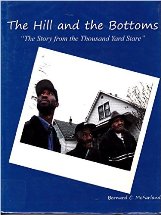 The Hill and the Bottoms is the story of the Martindale-Brightwood neighborhood on the northeast side of Indianapolis, a neighborhood that is ninety-five percent African American. The Brightwood-Martindale Historical Society, a group of concerned community members, has documented this “community in transition” noting the significant contributions of its African American residents. Using the society’s collected records, newspaper articles, and photographs, Bernard C. McFarland takes you on a journey of historical events in Indianapolis and in his eastside neighborhood.
The Hill and the Bottoms is the story of the Martindale-Brightwood neighborhood on the northeast side of Indianapolis, a neighborhood that is ninety-five percent African American. The Brightwood-Martindale Historical Society, a group of concerned community members, has documented this “community in transition” noting the significant contributions of its African American residents. Using the society’s collected records, newspaper articles, and photographs, Bernard C. McFarland takes you on a journey of historical events in Indianapolis and in his eastside neighborhood.
cloth / 112 pp / 2009 / ISBN 978-1578645381 / $25.00
Order No. 1530
As Long as They Don't Move Next Door: Segregation and Racial Conflict in American Neighborhoods
Stephen Grant Meyer
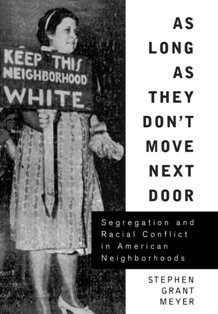 Despite the commonly held perception that most northern citizens embraced racial equality, As Long As They Don't Move Next Door graphically demonstrates the variety of methods―including violence and intimidation, unjust laws, restrictive covenants, discrimination by realtors and mortgage lenders, and white flight to suburban enclaves―used by whites to thwart the racial integration of their neighborhoods. Author Stephen Meyer offers the first full length national history of American race relations examined through the lens of housing discrimination, and he forces readers to confront and re-evaluate the deep and enduring division between the races.
Despite the commonly held perception that most northern citizens embraced racial equality, As Long As They Don't Move Next Door graphically demonstrates the variety of methods―including violence and intimidation, unjust laws, restrictive covenants, discrimination by realtors and mortgage lenders, and white flight to suburban enclaves―used by whites to thwart the racial integration of their neighborhoods. Author Stephen Meyer offers the first full length national history of American race relations examined through the lens of housing discrimination, and he forces readers to confront and re-evaluate the deep and enduring division between the races.
paper / 352 pp. / 1999 / ISBN 978-0847697007 / $28.95
Order No. 1326
African Americans in Fort Wayne: The First 200 Years
Dodie Marie Miller
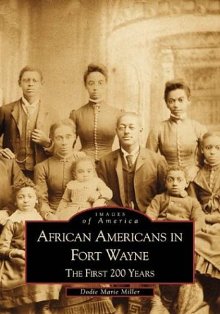 The history and contributions of African Americans in northeast Indiana have been largely overlooked. This new publication, African Americans in Fort Wayne: The First 200 Years, does not claim to be a definitive history of the topic. It does, however, recognize and honor the pioneers who have made the African-American community in Fort Wayne what it is today. Through diary excerpts, oral histories, and studies of social organizations, religion, and community, a rich, 200-year heritage is vividly depicted.
The history and contributions of African Americans in northeast Indiana have been largely overlooked. This new publication, African Americans in Fort Wayne: The First 200 Years, does not claim to be a definitive history of the topic. It does, however, recognize and honor the pioneers who have made the African-American community in Fort Wayne what it is today. Through diary excerpts, oral histories, and studies of social organizations, religion, and community, a rich, 200-year heritage is vividly depicted.
paper / 128 pp. / 2000 / ISBN 978-0738507156 / $21.99
Order No. 1303
One Hundred Percent American: The Rebirth and Decline of the Ku Klux Klan in the 1920s
Thomas Pegram
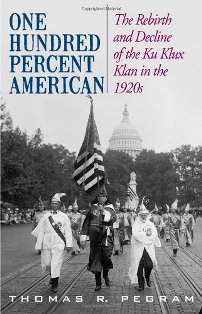 In the 1920s, a revived Ku Klux Klan burst into prominence as a self-styled defender of American values, a magnet for white Protestant community formation, and a would-be force in state and national politics. But the hooded bubble burst at mid-decade, and the social movement that had attracted several million members and additional millions of sympathizers collapsed into insignificance. Balanced and comprehensive, One Hundred Percent American explains the Klan's appeal, its limitations, and the reasons for its rapid decline in a society confronting the reality of cultural and religious pluralism.
In the 1920s, a revived Ku Klux Klan burst into prominence as a self-styled defender of American values, a magnet for white Protestant community formation, and a would-be force in state and national politics. But the hooded bubble burst at mid-decade, and the social movement that had attracted several million members and additional millions of sympathizers collapsed into insignificance. Balanced and comprehensive, One Hundred Percent American explains the Klan's appeal, its limitations, and the reasons for its rapid decline in a society confronting the reality of cultural and religious pluralism.
paper / 304 pp. / 2011 / ISBN 978-1566637114 / $27.95
Order No. 1324
Polite Protest: The Political Economy of Race in Indianapolis
Richard B. Pierce
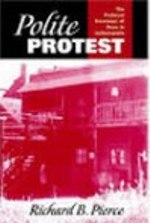 This history of the black community of Indianapolis in the 20th century focuses on methods of political action -- protracted negotiations, interracial coalitions, petition, and legal challenge -- employed to secure their civil rights. These methods of "polite protest" set Indianapolis apart from many Northern cities. Richard B. Pierce looks at how the black community worked to alter the political and social culture of Indianapolis. As local leaders became concerned with the city's image, black leaders found it possible to achieve gains by working with whites inside the existing power structure, while continuing to press for further reform and advancement. Pierce describes how Indianapolis differed from its Northern cousins such as Milwaukee, Chicago, and Detroit. Here, the city's people, black and white, created their own patterns and platforms of racial relations in the public and cultural spheres.
This history of the black community of Indianapolis in the 20th century focuses on methods of political action -- protracted negotiations, interracial coalitions, petition, and legal challenge -- employed to secure their civil rights. These methods of "polite protest" set Indianapolis apart from many Northern cities. Richard B. Pierce looks at how the black community worked to alter the political and social culture of Indianapolis. As local leaders became concerned with the city's image, black leaders found it possible to achieve gains by working with whites inside the existing power structure, while continuing to press for further reform and advancement. Pierce describes how Indianapolis differed from its Northern cousins such as Milwaukee, Chicago, and Detroit. Here, the city's people, black and white, created their own patterns and platforms of racial relations in the public and cultural spheres.
2005/ 168 pp / 9780253111340 / $34.95
Order No. 1471
Five Plays by Langston Hughes
Webster Smalley, ed.

Harlem life, pictured as fresh today as it was when these plays were first written.
paper / 258 pp. / 1968 / ISBN 0-253-20121-7 / $14.95$8.97
Order No. 2051
Lincoln and the U.S. Colored Troops
John David Smith
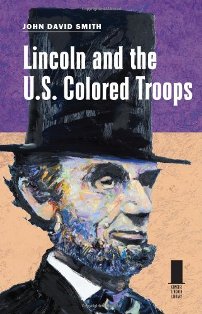 When Abraham Lincoln issued his final Emancipation Proclamation on January 1, 1863, he not only freed the slaves in the Confederate states but also invited freed slaves and free persons of color to join the U.S. Army as part of the U.S. Colored Troops (USCT), the first systematic, large-scale effort by the U.S. government to arm African Americans to aid in the nation’s defense. By the end of the war in 1865, nearly 180,000 black soldiers had fought for the Union. In Lincoln and the U.S. Colored Troops John David Smith offers a concise, enlightening exploration of the development of Lincoln’s military emancipation project, its implementation, and the recruitment and deployment of black troops.
When Abraham Lincoln issued his final Emancipation Proclamation on January 1, 1863, he not only freed the slaves in the Confederate states but also invited freed slaves and free persons of color to join the U.S. Army as part of the U.S. Colored Troops (USCT), the first systematic, large-scale effort by the U.S. government to arm African Americans to aid in the nation’s defense. By the end of the war in 1865, nearly 180,000 black soldiers had fought for the Union. In Lincoln and the U.S. Colored Troops John David Smith offers a concise, enlightening exploration of the development of Lincoln’s military emancipation project, its implementation, and the recruitment and deployment of black troops.
cloth / 168 pp. / ISBN 978-0809332908 / $24.95
Order No. 1436
Picturing Frederick Douglass: An Illustrated Biography of the Nineteenth Century's Most Photographed American
John Stauffer, Zoe Trodd, and Celeste Marie-Bernier
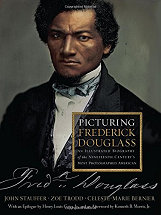 Picturing Frederick Douglass is a work that promises to revolutionize our knowledge of race and photography in nineteenth-century America. Teeming with historical detail, it is filled with surprises, chief among them the fact that neither George Custer nor Walt Whitman, and not even Abraham Lincoln, was the most photographed American of that century. In fact, it was Frederick Douglass (1818–1895), the ex-slave turned leading abolitionist, eloquent orator, and seminal writer whose fiery speeches transformed him into one of the most renowned and popular agitators of his age. Now, as a result of the groundbreaking research of John Stauffer, Zoe Trodd, and Celeste-Marie Bernier, Douglass emerges as a leading pioneer in photography, both as a stately subject and as a prescient theorist who believed in the explosive social power of what was then just a nascent art form. The comprehensive introduction by the authors, along with headnotes for each section, an essay by Henry Louis Gates, Jr., and an afterword by Kenneth B. Morris, Jr.―a direct Douglass descendent―provide the definitive examination of Douglass's intellectual, philosophical, and political relationships to aesthetics. Taken together, this landmark work canonizes Frederick Douglass through a form he appreciated the most: photography.
Picturing Frederick Douglass is a work that promises to revolutionize our knowledge of race and photography in nineteenth-century America. Teeming with historical detail, it is filled with surprises, chief among them the fact that neither George Custer nor Walt Whitman, and not even Abraham Lincoln, was the most photographed American of that century. In fact, it was Frederick Douglass (1818–1895), the ex-slave turned leading abolitionist, eloquent orator, and seminal writer whose fiery speeches transformed him into one of the most renowned and popular agitators of his age. Now, as a result of the groundbreaking research of John Stauffer, Zoe Trodd, and Celeste-Marie Bernier, Douglass emerges as a leading pioneer in photography, both as a stately subject and as a prescient theorist who believed in the explosive social power of what was then just a nascent art form. The comprehensive introduction by the authors, along with headnotes for each section, an essay by Henry Louis Gates, Jr., and an afterword by Kenneth B. Morris, Jr.―a direct Douglass descendent―provide the definitive examination of Douglass's intellectual, philosophical, and political relationships to aesthetics. Taken together, this landmark work canonizes Frederick Douglass through a form he appreciated the most: photography.
cloth / 320 pp. / 2015 / 9780871404688 / $47.50
Order no. 1623
A Shared Heritage: Art by Four African Americans
William E. Taylor and Harriet G. Warkel, eds.
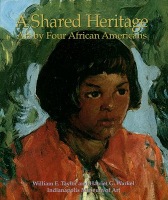
Work ranging from impressionism and social realism to cubism and abstract expressionism.
paper / 195 pp. / 1996 / ISBN 0-9336260-629 / $29.95$17.97
Order No. 2182
The Negro in Indiana before 1900: A Study of a Minority
Emma Lou Thornbrough
Indiana Historical Collections 37
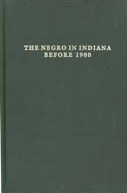
Pioneering work traces the history of African Americans in a northern state from their first arrival as slaves of 18th-century French traders through the end of the 19th century.
Reissued by Indiana University Press.
cloth / 412 pp. / 1993 / ISBN 0-253-35989-9 / $31.95
Order No. 2102
Indiana Blacks in the Twentieth Century
Emma Lou Thornbrough

Chronicles the growth, both in numbers and in power, of African Americans in a northern state that was notable for its antiblack tradition.
cloth / 235 pp. / 2000 / ISBN 0-253-33799-2 / $14.95
Order No. 2265
River Jordan: African American Urban Life in the Ohio Valley
Joe William Trotter, Jr.

Cloth / 200 pp. / 1998 / ISBN 0-8131-2065-9 / $32.50
Order No. 2285
paper / 200 pp. / 1998 / ISBN 0-8131-0950-7 / $25.00
Order No. 2284
Southern Seed, Northern Soil: African-American Farm Communities in the Midwest, 1765-1900
Stephen A. Vincent
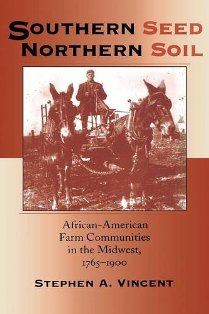 Southern Seed, Northern Soil captures the exceptional history of the Beech and Roberts settlements, two African-American and mixed-race farming communities on the Indiana frontier in the 1830s. Stephen Vincent analyzes the founders' backgrounds as a distinctive free people of color from the Old South. He traces the migration that culminated in the founding of the two communities. He follows the settlements' transformations through the pioneer and Civil War eras, and their gradual transition to commercial farming in the late 19th century.
Southern Seed, Northern Soil captures the exceptional history of the Beech and Roberts settlements, two African-American and mixed-race farming communities on the Indiana frontier in the 1830s. Stephen Vincent analyzes the founders' backgrounds as a distinctive free people of color from the Old South. He traces the migration that culminated in the founding of the two communities. He follows the settlements' transformations through the pioneer and Civil War eras, and their gradual transition to commercial farming in the late 19th century.
paper / 272 pp. / 2002 / ISBN 978-0253213310 / $21.00
Order No. 457
Children's Books
Going Over All the Hurdles: A Life of Oatess Archey
John A. Beinke
 Located sixty-five miles northeast of the state capital of Indianapolis, Marion, Indiana, has seen a number of notable people pass through the community, including such Indiana legends as Cole Porter and James Dean. It has also, however, been home to racial strife, including the infamous lynching of two African American men in 1930. Marion was also the hometown of a young black man who would do much to help restore harmony among blacks and whites in the community. Going over All the Hurdles: A Life of Oatess Archey, written by John A. Beineke, who lived in Madison and was one of Archey's students, is the fifth volume in the IHS Press's youth biography series. The book explores the career of Archey, the first African American to be elected sheriff in Indiana. Raised in Marion, Indiana, the young Archey and his loving family lived under the cloud of the notorious 1930 lynching.
Located sixty-five miles northeast of the state capital of Indianapolis, Marion, Indiana, has seen a number of notable people pass through the community, including such Indiana legends as Cole Porter and James Dean. It has also, however, been home to racial strife, including the infamous lynching of two African American men in 1930. Marion was also the hometown of a young black man who would do much to help restore harmony among blacks and whites in the community. Going over All the Hurdles: A Life of Oatess Archey, written by John A. Beineke, who lived in Madison and was one of Archey's students, is the fifth volume in the IHS Press's youth biography series. The book explores the career of Archey, the first African American to be elected sheriff in Indiana. Raised in Marion, Indiana, the young Archey and his loving family lived under the cloud of the notorious 1930 lynching.
cloth / 147 pp. / 2008 / ISBN: 978-0871952608 / $17.95
Order No. 2701
By Freedom's Light
Elizabeth O'Maley
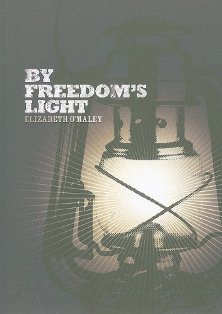 To thirteen-year-old Sarah Caldwell, everything in Indiana is dark--the bug-filled cabin, the woods engulfing the farm, and especially the future. Their widowed father has married Eliza, a young Quaker schoolteacher, and Sarah has just discovered that Eliza is an abolitionist! Sarah believes she must tell her father about the secret, unlawful activities Eliza's sewing circle performs at Levi and Catherine Coffin's home. Yet when Sarah learns her sister will be visiting Indiana with her husband and baby, happiness and anticipation overcome her concern about Eliza. Rachel's family soon arrives, bringing Polly, a slave girl about Sarah's age. Thrown together to do farm chores and look after Rachel's baby, the two girls, white and black, free and enslaved, slowly develop a friendship. Meanwhile, Sarah begins to question her beliefs about slavery. When bounty hunters nearly kidnap Polly, Sarah worries for her safety. Tensions mount within the cramped household as it appears that her brother-in-law may trade Polly's future for his family's prosperity. Ultimately, Sarah is faced with a bitter decision that could change forever the lives of her family.
To thirteen-year-old Sarah Caldwell, everything in Indiana is dark--the bug-filled cabin, the woods engulfing the farm, and especially the future. Their widowed father has married Eliza, a young Quaker schoolteacher, and Sarah has just discovered that Eliza is an abolitionist! Sarah believes she must tell her father about the secret, unlawful activities Eliza's sewing circle performs at Levi and Catherine Coffin's home. Yet when Sarah learns her sister will be visiting Indiana with her husband and baby, happiness and anticipation overcome her concern about Eliza. Rachel's family soon arrives, bringing Polly, a slave girl about Sarah's age. Thrown together to do farm chores and look after Rachel's baby, the two girls, white and black, free and enslaved, slowly develop a friendship. Meanwhile, Sarah begins to question her beliefs about slavery. When bounty hunters nearly kidnap Polly, Sarah worries for her safety. Tensions mount within the cramped household as it appears that her brother-in-law may trade Polly's future for his family's prosperity. Ultimately, Sarah is faced with a bitter decision that could change forever the lives of her family.
paper / 188 pp. / 2009 / ISBN: 978-0871952745 / $7.95
Order No. 889
cloth / 188 pp. / 2009 / ISBN: 978-0871952738 / $15.95
Order No. 888
A Good Night for Freedom
Barbara Olenyik Morrow
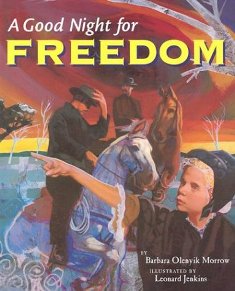 Two runaway slaves take refuge at Katy and Levi Coffin's home - a stop on the underground railroad. Based on historical events, this powerful story reveals the courage it took for people to run for freedom, and for one young girl to help them. Beautifully illustrated.
Two runaway slaves take refuge at Katy and Levi Coffin's home - a stop on the underground railroad. Based on historical events, this powerful story reveals the courage it took for people to run for freedom, and for one young girl to help them. Beautifully illustrated.
cloth / 32 pp. / 2004 / ISBN 0-8234-1709-3 / $16.95
Order No. 2455
Caroline Quarlls and the Underground Railroad
Julia Pferdehirt
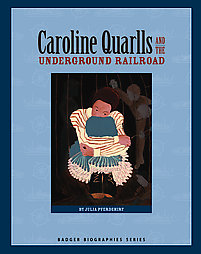 On July 4th, 1842, Caroline Quarlls left family, friends, and the only life she'd known behind in St. Louis, Missouri. As the child of a slave mother and a slave-owner father, her young life was one of drudgery and obedience until that fateful Independence Day when she illegally took a steamboat across the Mississippi River from St. Louis to Alton, Illinois, in the hope of reaching freedom. With the help of abolitionists, the 16-year-old traveled through Illinois, Wisconsin, Indiana, and Michigan on the Underground Railroad, enduring long, bumpy rides in the bottom of a wagon and taking cover in everything from barrels to potato chutes. Each step of the way, Quarlls was pursued by lawyers paid to retrieve her and bounty hunters greedy for the reward money. Finally, she crossed from Detroit into Sandwich, Canada, where created a new life as a free woman, an exciting but also frightening, experience. Quarlls' story gives young readers a personal snapshot of the tension-filled journey of a runaway slave while illuminating a segment of the complicated history of race in our nation.
On July 4th, 1842, Caroline Quarlls left family, friends, and the only life she'd known behind in St. Louis, Missouri. As the child of a slave mother and a slave-owner father, her young life was one of drudgery and obedience until that fateful Independence Day when she illegally took a steamboat across the Mississippi River from St. Louis to Alton, Illinois, in the hope of reaching freedom. With the help of abolitionists, the 16-year-old traveled through Illinois, Wisconsin, Indiana, and Michigan on the Underground Railroad, enduring long, bumpy rides in the bottom of a wagon and taking cover in everything from barrels to potato chutes. Each step of the way, Quarlls was pursued by lawyers paid to retrieve her and bounty hunters greedy for the reward money. Finally, she crossed from Detroit into Sandwich, Canada, where created a new life as a free woman, an exciting but also frightening, experience. Quarlls' story gives young readers a personal snapshot of the tension-filled journey of a runaway slave while illuminating a segment of the complicated history of race in our nation.
paper / 120 pp. / 2008 / ISBN 978-0-8702038-8-6 / $12.95
Order No. 2871
Better Homes of South Bend: An American Story of Courage
Gabrielle Robinson
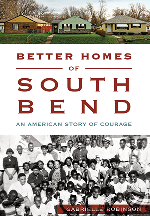 In 1950, a group of African American workers at the Studebaker factory in South Bend met in secret. Their mission was to build homes away from the factories and slums where they were forced to live. They came from the South to make a better life for themselves and their children, but they found Jim Crow in the North as well. The meeting gave birth to Better Homes of South Bend, and a triumph against the entrenched racism of the times took all their courage, intelligence and perseverance. Author Gabrielle Robinson tells the story of their struggle and provides an intimate glimpse into a part of history that all too often is forgotten.
In 1950, a group of African American workers at the Studebaker factory in South Bend met in secret. Their mission was to build homes away from the factories and slums where they were forced to live. They came from the South to make a better life for themselves and their children, but they found Jim Crow in the North as well. The meeting gave birth to Better Homes of South Bend, and a triumph against the entrenched racism of the times took all their courage, intelligence and perseverance. Author Gabrielle Robinson tells the story of their struggle and provides an intimate glimpse into a part of history that all too often is forgotten.
paper / 144 pp. / 2015 / 9781467118651 / $21.99
Order no. 1278
Frederick Douglass for Kids
Nancy I. Sanders
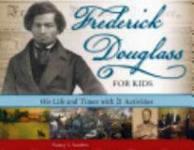 Few Americans have had as much impact on this nation as Frederick Douglass. Born on a plantation, he later escaped slavery and helped others to freedom via the Underground Railroad. In time he became a bestselling author, an outspoken newspaper editor, a brilliant orator, a tireless abolitionist, and a brave civil rights leader. Frederick Douglass for Kids follows the footsteps of this American hero, from his birth into slavery to his becoming a friend and confidant of presidents and the leading African American of his day. And to better appreciate Frederick Douglass and his times, readers will form a debating club, cook a meal similar to the one Douglass shared with John Brown, make a civil war haversack, participate in a microlending program, and more. This valuable resource also includes a time line of significant events, a list of historic sites to visit or explore online, and Web resources for further study.
Few Americans have had as much impact on this nation as Frederick Douglass. Born on a plantation, he later escaped slavery and helped others to freedom via the Underground Railroad. In time he became a bestselling author, an outspoken newspaper editor, a brilliant orator, a tireless abolitionist, and a brave civil rights leader. Frederick Douglass for Kids follows the footsteps of this American hero, from his birth into slavery to his becoming a friend and confidant of presidents and the leading African American of his day. And to better appreciate Frederick Douglass and his times, readers will form a debating club, cook a meal similar to the one Douglass shared with John Brown, make a civil war haversack, participate in a microlending program, and more. This valuable resource also includes a time line of significant events, a list of historic sites to visit or explore online, and Web resources for further study.
paper / 144 pp. / 2012 / ISBN 9781613743577 / $16.95
Order no. 2984
A Kid's Guide to African American History
Nancy I. Sanders
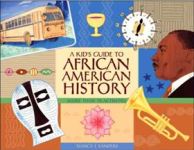 What do all these people have in common: the first man to die in the American Revolution, a onetime chief of the Crow Nation, the inventors of peanut butter and the portable X-ray machine, and the first person to make a wooden clock in this country? They were all great African Americans. For parents and teachers interested in fostering cultural awareness among children of all races, this book includes more than 70 hands-on activities, songs, and games that teach kids about the people, experiences, and events that shaped African American history. This expanded edition contains new material throughout, including additional information and biographies. Children will have fun designing an African mask, making a medallion like those worn by early abolitionists, playing the rhyming game "Juba," inventing Brer Rabbit riddles, and creating a unity cup for Kwanzaa. Along the way they will learn about inspiring African American artists, inventors, and heroes like Harriet Tubman, Benjamin Banneker, Rosa Parks, Langston Hughes, and Louis Armstrong, to name a few.
What do all these people have in common: the first man to die in the American Revolution, a onetime chief of the Crow Nation, the inventors of peanut butter and the portable X-ray machine, and the first person to make a wooden clock in this country? They were all great African Americans. For parents and teachers interested in fostering cultural awareness among children of all races, this book includes more than 70 hands-on activities, songs, and games that teach kids about the people, experiences, and events that shaped African American history. This expanded edition contains new material throughout, including additional information and biographies. Children will have fun designing an African mask, making a medallion like those worn by early abolitionists, playing the rhyming game "Juba," inventing Brer Rabbit riddles, and creating a unity cup for Kwanzaa. Along the way they will learn about inspiring African American artists, inventors, and heroes like Harriet Tubman, Benjamin Banneker, Rosa Parks, Langston Hughes, and Louis Armstrong, to name a few.
paper / 256 pp. / 2007 / ISBN 9781556526534 / $14.95
Order No. 2913
Picturing Frederick Douglass: An Illustrated Biography of the Nineteenth Century's Most Photographed American
John Stauffer, Zoe Trodd, and Celeste Marie-Bernier
 Picturing Frederick Douglass is a work that promises to revolutionize our knowledge of race and photography in nineteenth-century America. Teeming with historical detail, it is filled with surprises, chief among them the fact that neither George Custer nor Walt Whitman, and not even Abraham Lincoln, was the most photographed American of that century. In fact, it was Frederick Douglass (1818–1895), the ex-slave turned leading abolitionist, eloquent orator, and seminal writer whose fiery speeches transformed him into one of the most renowned and popular agitators of his age. Now, as a result of the groundbreaking research of John Stauffer, Zoe Trodd, and Celeste-Marie Bernier, Douglass emerges as a leading pioneer in photography, both as a stately subject and as a prescient theorist who believed in the explosive social power of what was then just a nascent art form. The comprehensive introduction by the authors, along with headnotes for each section, an essay by Henry Louis Gates, Jr., and an afterword by Kenneth B. Morris, Jr.―a direct Douglass descendent―provide the definitive examination of Douglass's intellectual, philosophical, and political relationships to aesthetics. Taken together, this landmark work canonizes Frederick Douglass through a form he appreciated the most: photography.
Picturing Frederick Douglass is a work that promises to revolutionize our knowledge of race and photography in nineteenth-century America. Teeming with historical detail, it is filled with surprises, chief among them the fact that neither George Custer nor Walt Whitman, and not even Abraham Lincoln, was the most photographed American of that century. In fact, it was Frederick Douglass (1818–1895), the ex-slave turned leading abolitionist, eloquent orator, and seminal writer whose fiery speeches transformed him into one of the most renowned and popular agitators of his age. Now, as a result of the groundbreaking research of John Stauffer, Zoe Trodd, and Celeste-Marie Bernier, Douglass emerges as a leading pioneer in photography, both as a stately subject and as a prescient theorist who believed in the explosive social power of what was then just a nascent art form. The comprehensive introduction by the authors, along with headnotes for each section, an essay by Henry Louis Gates, Jr., and an afterword by Kenneth B. Morris, Jr.―a direct Douglass descendent―provide the definitive examination of Douglass's intellectual, philosophical, and political relationships to aesthetics. Taken together, this landmark work canonizes Frederick Douglass through a form he appreciated the most: photography.
cloth / 320 pp. / 2015 / 9780871404688 / $47.50
Order no. 1623
Growing Up in Slavery: Stories of Young Slaves as Told by Themselves
Yuval Taylor, ed.
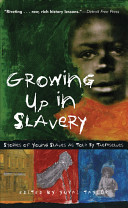 Ten slaves—all under the age of 19—tell stories of enslavement, brutality, and dreams of freedom in this collection culled from full-length autobiographies. These accounts, selected to help teenagers relate to the horrific experiences of slaves their own age living in the not-so-distant past, include stories of young slaves torn from their mothers and families, suffering from starvation, and being whipped and tortured. But these are not all tales of deprivation and violence; teenagers will relate to accounts of slaves challenging authority, playing games, telling jokes, and falling in love. These stories cover the range of the slave experience, from the passage in slave ships across the Atlantic—and daily life as a slave both on large plantations and in small-city dwellings—to escaping slavery and fighting in the Civil War. The writings of Olaudah Equiano, Frederick Douglass, William Wells Brown, Harriet Jacobs, Elizabeth Keckley, and other lesser-known slaves are included.
Ten slaves—all under the age of 19—tell stories of enslavement, brutality, and dreams of freedom in this collection culled from full-length autobiographies. These accounts, selected to help teenagers relate to the horrific experiences of slaves their own age living in the not-so-distant past, include stories of young slaves torn from their mothers and families, suffering from starvation, and being whipped and tortured. But these are not all tales of deprivation and violence; teenagers will relate to accounts of slaves challenging authority, playing games, telling jokes, and falling in love. These stories cover the range of the slave experience, from the passage in slave ships across the Atlantic—and daily life as a slave both on large plantations and in small-city dwellings—to escaping slavery and fighting in the Civil War. The writings of Olaudah Equiano, Frederick Douglass, William Wells Brown, Harriet Jacobs, Elizabeth Keckley, and other lesser-known slaves are included.
paper / 256 pp. / 2007 / ISBN 9781556526350 / $11.95
Order No. 2912
Sister of the Solid Rock
Wilma Rugh Taylor
 First settled by African Americans in 1878, Indianapolis's east-side district of Martindale had, by the early 1940s, fallen on hard times. A bleak economic outlook had helped fuel a growing crime rate among the neighborhood's young people. Into this seemingly hopeless situation stepped a forty-four-year-old wife and mother who knew something about despair, having endured the death of a child. In 1941 the woman—Edna Barnes Martin—established a day care center for the children of working mothers, offering hope and security to countless young African Americans. For thirty years Martin, the founder and director of the East side Christian Center, "reformed so-called unredeemable boys, trained girls to become competent women, clothed and fed multitudes, and found jobs for the unemployed." Martin's work in one of Indianapolis's worst ghettos helped break down negative racial attitudes and gained the spiritual and financial backing of white missionaries and philanthropists throughout the state.
First settled by African Americans in 1878, Indianapolis's east-side district of Martindale had, by the early 1940s, fallen on hard times. A bleak economic outlook had helped fuel a growing crime rate among the neighborhood's young people. Into this seemingly hopeless situation stepped a forty-four-year-old wife and mother who knew something about despair, having endured the death of a child. In 1941 the woman—Edna Barnes Martin—established a day care center for the children of working mothers, offering hope and security to countless young African Americans. For thirty years Martin, the founder and director of the East side Christian Center, "reformed so-called unredeemable boys, trained girls to become competent women, clothed and fed multitudes, and found jobs for the unemployed." Martin's work in one of Indianapolis's worst ghettos helped break down negative racial attitudes and gained the spiritual and financial backing of white missionaries and philanthropists throughout the state.
cloth / 2002 / 198 pp / 978-0871951618 / $12.95
Order no. 2373
Indiana Blacks in the 20th Century
Emma Lou Thornbrough
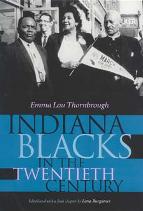 Indiana Blacks in the Twentieth Century is the long-awaited sequel to Emma Lou Thornbrough’s classic study The Negro in Indiana before 1900. In this posthumous volume, Thornbrough (1913–1994), the acknowledged dean of black history in Indiana, chronicles the growth, both in numbers and in power, of African Americans in a northern state that was notable for its antiblack tradition. She shows the effects of the Great Migration of African Americans to Indiana during World War I and World War II to work in war industries, linking the growth of the black community to the increased segregation of the 1920s and demonstrating how World War II marked a turning point in the movement in Indiana to expand the civil rights of African Americans. Indiana Blacks describes the impact of the national civil rights movement on Indiana, as young activists, both black and white, challenged segregation and racial injustice in many aspects of daily life, often in new organizations and with new leaders. The final chapter by Lana Ruegamer explores ways that black identity was affected by new access to education, work, and housing after 1970, demonstrating gains and losses from integration.
Indiana Blacks in the Twentieth Century is the long-awaited sequel to Emma Lou Thornbrough’s classic study The Negro in Indiana before 1900. In this posthumous volume, Thornbrough (1913–1994), the acknowledged dean of black history in Indiana, chronicles the growth, both in numbers and in power, of African Americans in a northern state that was notable for its antiblack tradition. She shows the effects of the Great Migration of African Americans to Indiana during World War I and World War II to work in war industries, linking the growth of the black community to the increased segregation of the 1920s and demonstrating how World War II marked a turning point in the movement in Indiana to expand the civil rights of African Americans. Indiana Blacks describes the impact of the national civil rights movement on Indiana, as young activists, both black and white, challenged segregation and racial injustice in many aspects of daily life, often in new organizations and with new leaders. The final chapter by Lana Ruegamer explores ways that black identity was affected by new access to education, work, and housing after 1970, demonstrating gains and losses from integration.
cloth / 304 pp. / 2001 / 9780253337993 / $30.00
Order no. 476
The Civil Rights Movement for Kids
Mary C. Turck
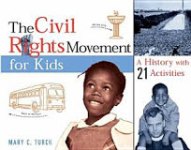 Surprisingly, kids were some of the key instigators in the Civil Rights Movement, like Barbara Johns, who held a rally in her elementary school gym that eventually led to the Brown vs. Board of Education Supreme Court school desegregation decision, and six-year-old Ruby Bridges, who was the first black student to desegregate elementary schools in New Orleans. In The Civil Rights Movement for Kids, children will discover how students and religious leaders worked together to demand the protection of civil rights for black Americans. They will relive the fear and uncertainty of Freedom Summer and learn how northern white college students helped bring national attention to atrocities committed in the name of segregation, and they'll be inspired by the speeches of Martin Luther King, Jr., Medgar Evers, and Malcolm X. Activities include: reenacting a lunch counter sit-in; organizing a workshop on nonviolence; holding a freedom film festival followed by a discussion; and organizing a choral group to sing the songs that motivated the foot soldiers in this war for rights.
Surprisingly, kids were some of the key instigators in the Civil Rights Movement, like Barbara Johns, who held a rally in her elementary school gym that eventually led to the Brown vs. Board of Education Supreme Court school desegregation decision, and six-year-old Ruby Bridges, who was the first black student to desegregate elementary schools in New Orleans. In The Civil Rights Movement for Kids, children will discover how students and religious leaders worked together to demand the protection of civil rights for black Americans. They will relive the fear and uncertainty of Freedom Summer and learn how northern white college students helped bring national attention to atrocities committed in the name of segregation, and they'll be inspired by the speeches of Martin Luther King, Jr., Medgar Evers, and Malcolm X. Activities include: reenacting a lunch counter sit-in; organizing a workshop on nonviolence; holding a freedom film festival followed by a discussion; and organizing a choral group to sing the songs that motivated the foot soldiers in this war for rights.
2000 / 208 pp / 9781613740514 / $16.95
Order No. 1490
Audio, Visual, and Supplemental Resources
Southeast Indiana Trails to Freedom: Underground Railroad Driving Tours

This thoroughly illustrated guide contains photographs, maps, and a wealth of information on visiting underground railroad sites in southeast Indiana. Produced by the Indiana Underground Railroad Coalition in cooperation with the Indiana Office of Tourism Development through the Lt. Governor's Quality of Place Initiative.
paper / 58 pp. / $5.00
Order no. 2602
Songs of Freedom: Music from Ordinary People, Extraordinary Courage
Produced by Solid Light, Inc. for the Carnegie Center for Art History, Inc.

"Songs of Freedom was created to complement the permanent exhibit Ordinary People, Extraordinary Courage: Men and Women of the Underground Railroad at the Carnegie Center for Art History in New Albany, Indiana."
"Nobody Knows the Trouble I've Seen" (play)
"Steal Away" (play)
"Follow the Drinking Gourd" (play)
"Wade in the Water" (play)
"O, Canaan" (play)
"Swing Low, Sweet Chariot" (play)
"Go Down Moses" (play)
"This Train is Bound for Glory" (play)
"Down by the River" (play)
compact disc / $18.99
Order No. 2603
Resources from the Indiana Department of Historic Preservation and Archaeology
The Role of Free Blacks in Indiana's Underground Railroad
Maxine F. Brown
The case of Floyd, Harrison, and Washington Counties.
paper / 23 pp. / $5.00 (no additional discount)
Order No. 6095
Southeastern Indiana's Underground Railroad Routes and Operations
Diane Perrine Coon
Details Underground Railroad activity with photographs, maps, and reminiscences in the counties of Southeastern Indiana.
paper / 325 pp. 2001 / $5.00 (no additional discount)
Order No. 6096
Underground Railroad
Hurley C. Goodall
The invisible road to freedom through Indiana as recorded by the Works Progress Administration Writers Project.
paper / 341 pp. / 2001 / $5.00 (no additional discount)
Order No. 6094
Walkin' the Wabash
Marlene K. Lu
An exploration into the Underground Railroad in west central Indiana.
paper / 134 pp. / $5.00 (no additional discount)
Order No. 6097
Concerning Underground Railroad Activity in Southwestern Indiana
Randy Mills, et. al
This report locates Underground Railroad sites in southwestern Indiana and provides information about the people involved and locations of activities.
paper / 34 pp. 2001/$5.00 (no additional discount)
Order No. 6092
The Underground Railroad and the Antislavery Movement in Fort Wayne and Allen County, Indiana
Angela M. Quinn
"The antebellum story of African Americans in Fort Wayne is as grand and complex as the story of the city itself."
paper / 275 pp. / 2001 / $5.00 (no additional discount)
Order No. 6098
Underground Railroad Research in Select Indiana Counties
Jeannie Regan-Dinius et al.
Includes many images of documents and places and each chapter concludes with endnotes and a bibliography. The following are the essay titles:
"Federal Court Cases: Holdings at the National Archives, Chicago" by Jeannie Regan-Dinius
"Gateway to Freedom: New Albany-Floyd County, Indiana" by Pam Peters
"Grant County" by Students at Marion High School
"Huntington and Wabash Counties" by Jeannie Regan-Diniius
"Kankakee & St. Joseph river Valleys of Indiana" by Terry Goldsworthy
paper / 122 pp. / 2004 / $5.00 (no additional discount)
Order No. 6103
Interpretive Stories Associated with the Underground Railroad in the Indianapolis Area
Dona Stokes-Lucas et al.
Several churches and other sites were visited and their Underground Railroad activities researched.
paper / 50 pp. / 2001 / $5.00 (no additional discount)
Order No. 6093
Issues of The Indiana Historian - African-Americans in Indiana
paper / ISSN 1071-3301 / $1.00 (1-19 copies); $.30 (20 or more copies - no additional discount)
Indiana Emigrants to Liberia
The movement in Indiana and the country around the time of the Civil War to settle black Americans in Africa.
16 pp. / December 1999
Order No. 7049
Black Settlers in Indiana
Focuses on settlements of free blacks; emphasis on the Roberts Settlement in early Hamilton County in central Indiana.
12 pp. / 1993
Order No. 7015
Indiana's 28th Regiment: Black Soldiers for the Union
Indiana's 28th Regiment: Black Soldiers for the Union
Regimental Chaplain Garland H. White's letters to the Christian Recorder about this only black regiment organized in Indiana provided eyewitness accounts of the service of the 28th.
16 pp. / 1994
Order No. 7023
Indiana in the Spanish-American War
Indiana in the Spanish-American War
The home front experience, Indiana volunteers, and the dilemma of black citizens and soldiers.
16 pp. / 1998
Order No. 7045
"We don't intend to fall in anymore at the end of the parade."
"We don't intend to fall in anymore at the end of the parade."
A history of blacks in Evansville from settlement to the 1940s.
16 pp. / 1995
Order No. 7030
